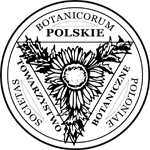Abstract
During the period 2008-2010, microplot experiments on spring barley were carried out in the experimental field of the Institute of Soil Science and Plant Cultivation – State Research Institute in Puławy, on a good wheat soil complex. The following cultivars were compared: ‘Conchita’, ‘Kormoran’, ‘Rufus’, ‘Skald’, ‘Skarb’ (2008-2009) as well as ‘Afrodite’, ‘Aliciana’, ‘Bordo’, ‘Skald’, and ‘Suweren’ (2009-2010), in terms of their morphological characters determining grain yield and their response to sowing date: 7-12 April and 17-22 April. Among the spring barley cultivars tested, there were large differences in productive tillering of plants, number of ears per unit area, and grain yield. Smaller differences related to number of grains per ear and 1000 grain weight. The cultivars ‘Suweren’ and ‘Skarb’ were characterized by high grain yield thanks to greater plant tillering and higher number of ears. The cultivar ‘Bordo’ was marked by the highest number of grains per ear, while cv. ‘Kormoran’ had the highest 1000 grain weight. A delayed sowing date caused a shortening of the growing season by 8-9 days and a shortening of all plant growth stages. This negatively affected number of ears per unit area and grain yield, but did not result in significant changes in number of grains per ear and 1000 grain weight. ‘Suweren’ and ‘Skarb’, i.e. cultivars with higher tillering ability, can be considered to be cultivars more tolerant to delayed sowing date.
Keywords
Hordeum sativum L.; cultivars; plant tillering; grain yield; phenological phases






